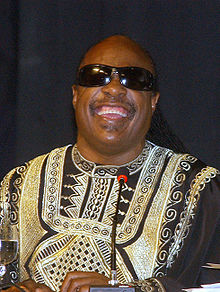Piano Sheets > Stevie Wonder Sheet Music > My Cherie Amour (ver. 1) Piano Sheet
My Cherie Amour (ver. 1) by Stevie Wonder - Piano Sheets and Free Sheet Music

About the Song
"My Cherie Amour" is a 1969 soul classic by Motown singer-songwriter Stevie Wonder.
The song was originally recorded in 1966, but not released (it was subsequently remixed for release in 1969). Co-written by the singer, Henry Cosby, and Sylvia Moy, the song was an autobiographical account by Wonder about a woman he was fascinated with while in school at the Michigan School for the Blind in Lansing, Michigan.
The song was originally written as "Oh My Marcia" but Moy told Stevie to change the name from Marcia to cherie amour. The song became a #4 hit on both the Billboard pop and R&B singles charts in 1969. The song has been covered by fellow Motown act The Jackson 5, as well as by vocalists Andy Williams for his 1969 RIAA-certified gold album Get Together with Andy Williams and Billy Eckstine for his 1971 album Feel the Warm.
My Cherie Amour is played on the Miss Dior Cherie commercial.
Download this sheet!
About the Artist

Random article
Piano notes and music reading No language is easy to learn except for our mother tongue. Mother tongue is a language which we start learning as soon as we are conceived. But learning some other language can be difficult if you are really not into it. Piano Notes are written in a completely different language. Agreed that the characters in the piano notes are very artistic and beautiful but they are equally strange to beginners and newcomers. But here is one interesting fact. Learning music reading from a piano notes music sheet is not a very difficult task. Actually it is much easier than learning a foreign Asian language like Chinese. Memorization and repetition are the two main ingredients for success in mastering the language of piano notes. So realistically speaking, once you are done reading the basics, all you have to do is practice the language as much as you can. To say in a very classical tone, practice till each and every note starts running through your veins. (More...)
